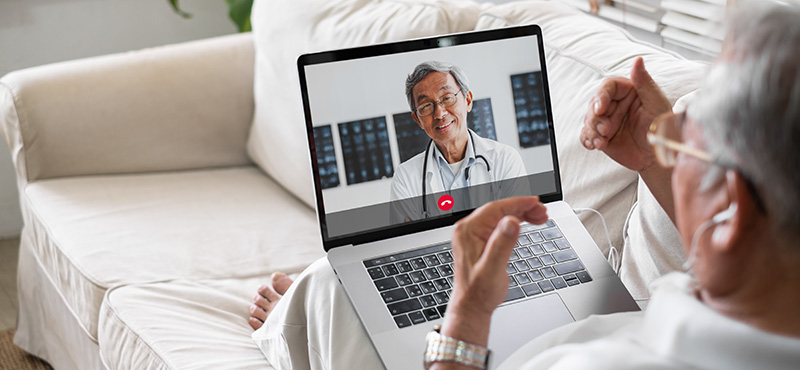Even with safety restrictions in place throughout the COVID pandemic, technology enabled us to receive quality human services – such as healthcare – from a distance. And with a large majority of Americans likely to continue turning to virtual healthcare services in a post-COVID world, the future of telehealth continues to evolve.
Many of us think of telehealth as a patient speaking to a doctor over a screen. And while remote consultations are certainly one important aspect, they represent only the tip of the iceberg.
Let’s take a look at some key advantages of telehealth and discover how emerging technology is transforming how we access healthcare with the help of broadband infrastructure.
The future of telehealth relies on superfast internet
Unlocking the true potential of telehealth will require a fast internet connection. To their credit, broadband providers have already begun to address future technology needs through the introduction of 10G, or 10 gigabits per second, which is roughly 10 times faster than currently available speeds. This boost will significantly reduce latency, the time it takes for data to get to its destination, to almost zero, and everything from holographic doctor’s visits to remote surgery will become possible.
Here are a few other benefits that will be enabled by superfast broadband.
- Enhanced security
Given that healthcare involves the handling of large amounts of personal data, it’s important that patient information remains safe and secure throughout the entire health ecosystem. With 10G, healthcare systems will be able to immediately identify and isolate any security threats. - Increased monitoring capabilities
Instead of receiving sporadic updates during in-person office visits, at-home monitoring via wearables and other technologies powered by a reliable 10G connection will ensure medical professionals are up to date on each patient’s latest developments. - Expanded bandwidth & capacity
With analysts anticipating 7.4 million IoMT (Internet of Medical Things) in use at smart hospitals by 2026, they will need to possess an exponentially enhanced internet capacity to seamlessly manage devices. 10G will allow surgical centers, for example, not only to take advantage of multiple technologies simultaneously but to do so at scale.
Telehealth at home and in the hospital
But what innovations will a superfast internet connection, like 10G, enable? Here are some real-life examples of what the future of telehealth could look like:
- Real-time monitoring and analysis
Direct-to-consumer diagnostic medical devices will take the form of watches, clothing, jewelry, or even furniture, seamlessly turning everyday objects into healthcare-support systems. Patient information collected from these devices will be stored, managed, and analyzed in real time. By means of a digital ID, individuals will be able to securely access their files and receive personalized recommendations on how to improve or maintain their health and wellness. - Homes turn into healthcare hubs
Imagine a future where your day begins with a view of a personal dashboard that provides an update on each family member’s health status. If an increase in stress is detected, a synthetic health coach will be able to offer deep-state relaxation experiences through virtual-reality (VR) technology such as goggles and haptic suits. Relaxation will be further enhanced by the ability to take care of most medical visits right in the home, including mobile-imaging services such as X-rays. - Remote surgery and assistance
In hospitals, surgeons will be able to use telehealth technology to perform remote surgery—a boost for rural hospitals that may not have certain specialists on staff. Autonomous robots in the operating room, meanwhile, will be able to suture incisions and complete procedures. Indeed, a whole network of connected surgical centers will be able to provide top-quality care to anyone in the country, regardless of where they are located.
Active participants in our well-being
The future of telehealth is not just about technology, but about turning us from passive patients into active participants in our well-being: emotional, physical, and mental. Through a combination of high-speed internet and telehealth, a constant process of unobtrusive, invisible monitoring will allow us to detect issues in real time and make necessary adjustments to return to the path of health and fulfillment.
To find out more about the 10G future that awaits us, click here. To learn how you can support a faster, connected future, visit our broadband infrastructure campaign.
